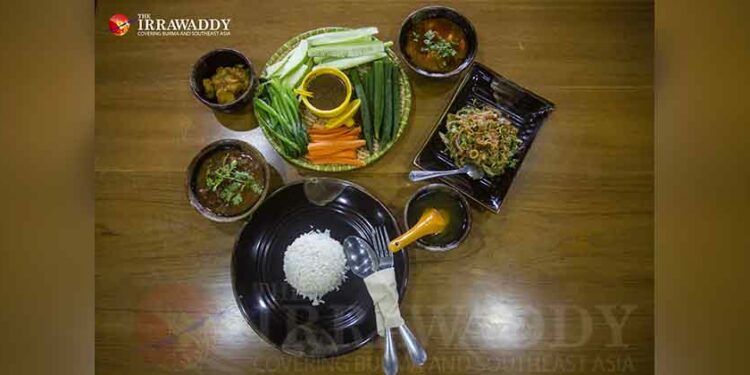YANGON—When people speak of Myanmar dishes, mohinga (the popular fish noodle soup) is the first thing that often comes to mind. But little is usually said of Ngapi, the fish paste that serves as a main ingredient for most Burmese dishes—let alone ngapi yay kyo, the closely-related fish-paste dipping sauce that serves as an essential side dish to most Burman meals.
Salty in flavor, ngapi is normally made with fish or prawn. It can easily be found in local markets and likely in every home in Myanmar, where people cook it from raw into popular dishes like ngapi yay, ngapi chat, ngapi kyaw—the list could go on, but it serves as the main ingredient for many different dishes made in many different styles.
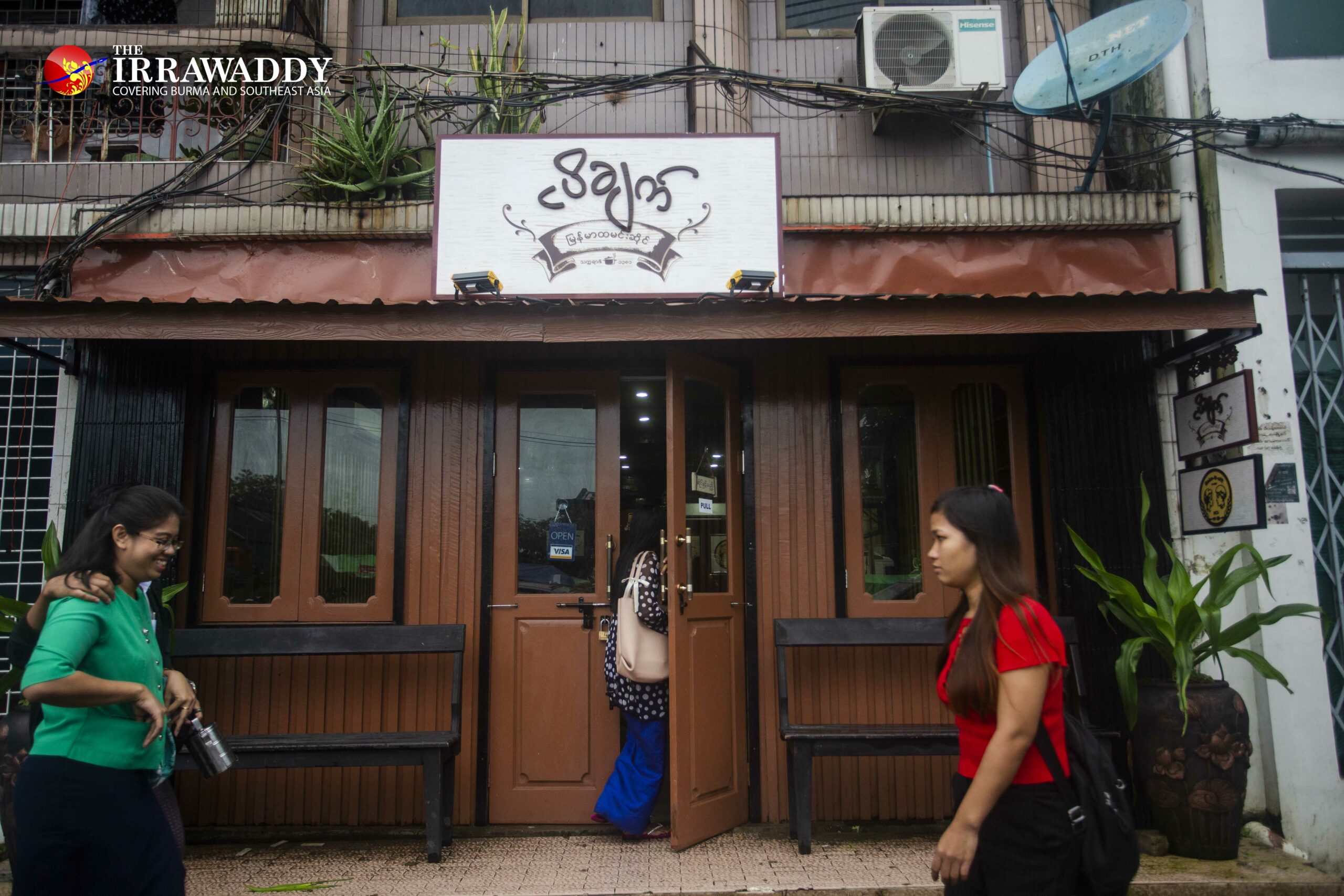
A few months ago, two young doctors-cum-gourmands opened the Burmese restaurant Ngapichat, offering a range of Burmese curries cooked using ngapi as the main ingredient.
“Every Burmese family recipe includes ngapi,” said Ko Kyaw Chan Nyein, one of the two co-founders, offering the restaurant’s raison d’etre. “And ngapi yay kyo is the essential Burmese side dish, but people never mention it. That’s why we wanted to promote this essential Burmese ingredient.”
Authentic Burmese food often only comes in open-air, tea-shop-like restaurants with storied hygienic issues, rumored or real, he said.
“We wanted to open an authentic Burmese restaurant but with good air-conditioning and outstanding hygiene and service,” Ko Kyaw Chan Nyein said; “three months ago, we opened Ngapichat.”
The restaurant—a small shop at the corner of Lan Thit Street and Strand Road in Yangon’s downtown Lanmadaw Township—is already garnering positive, even viral responses on social media. The air conditioning definitely runs cool and the décor simple, with two long tables and few small ones. The mostly-female staff is friendly.
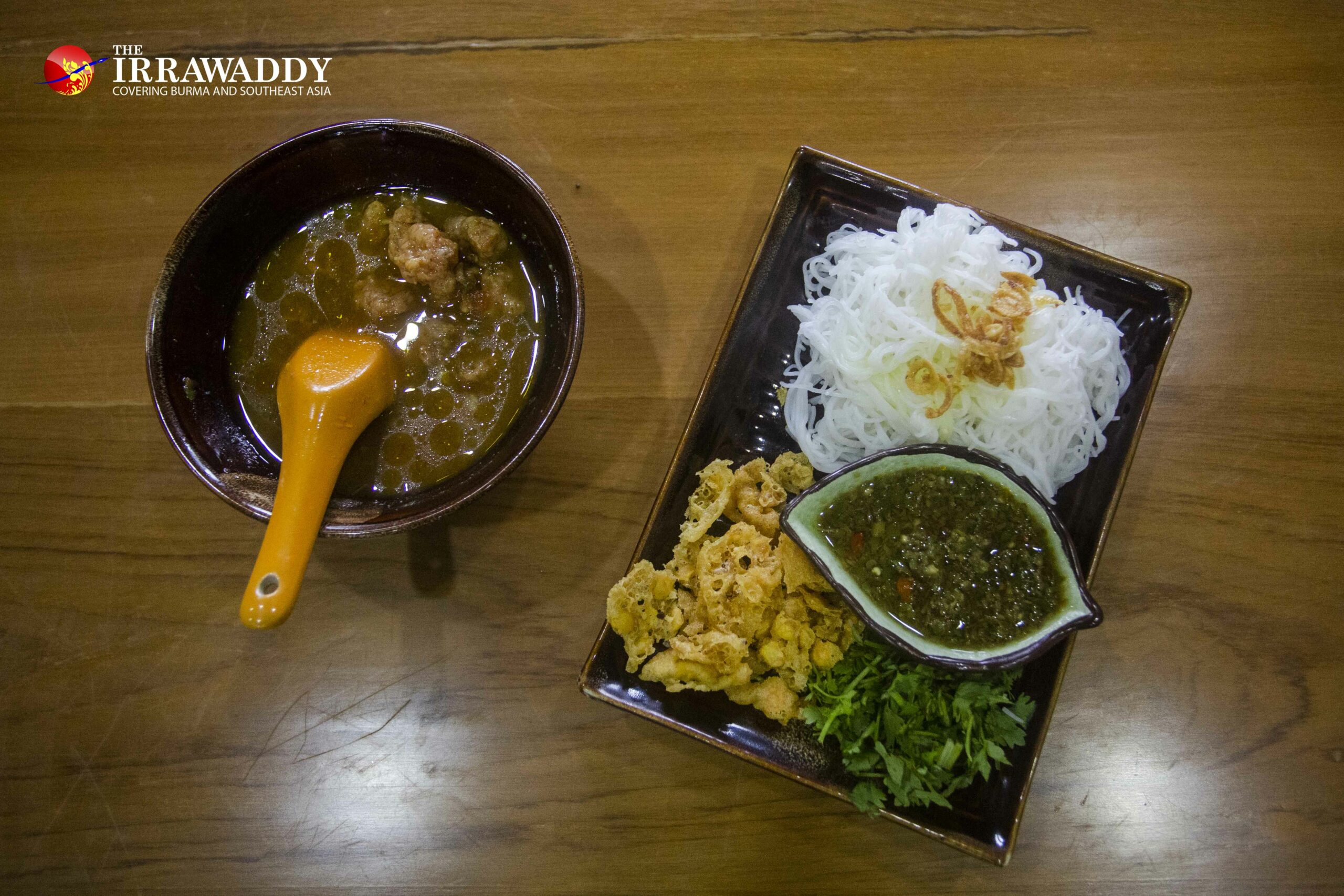
The menu prizes depth over breadth, with just a few, mostly spicy dishes, though guests can specify how spicy they’d like theirs. The Irrawaddy recently tried the beef ngapi chat, the prawns with chili, the centella salad and fish balls with ngapi chat mont di—all at a mid-level of spice.
Dishes are pre-cooked but heated to order, which can take some time. Ours came with side dishes like potato curry, fried long beans, soup and, of course, ngapi yay—plus an assortment of vegetables and fruits for dipping, including cucumbers, carrots, okra and green mango. Like a proper meal cooked at home, the portions are large and not too oily.
“Most dishes at Burmese restaurant are oily curries, but we both didn’t like that, and we thought there must be others like us. When we thought of opening a restaurant, we wanted to offer home-cooked curries that weren’t too oily,” Ma Thiri Su, the other half behind Ngapichat, said.
“Most people don’t like to eat outside but do prefer home cooking. When they come to our restaurant, we want them to feel like they’re eating at home, so we provide a rice buffet that allows them to eat until their bellies are full—just like at home,” she said.
The beef ngapi chat (5,500 kyats) is cut into small pieces and simmered in ngapi chat gravy. The meat is tender and moderately salted and spiced. While ngapi can be overwhelmingly fishy to the nose, their dishes manage to keep the smell at bay.
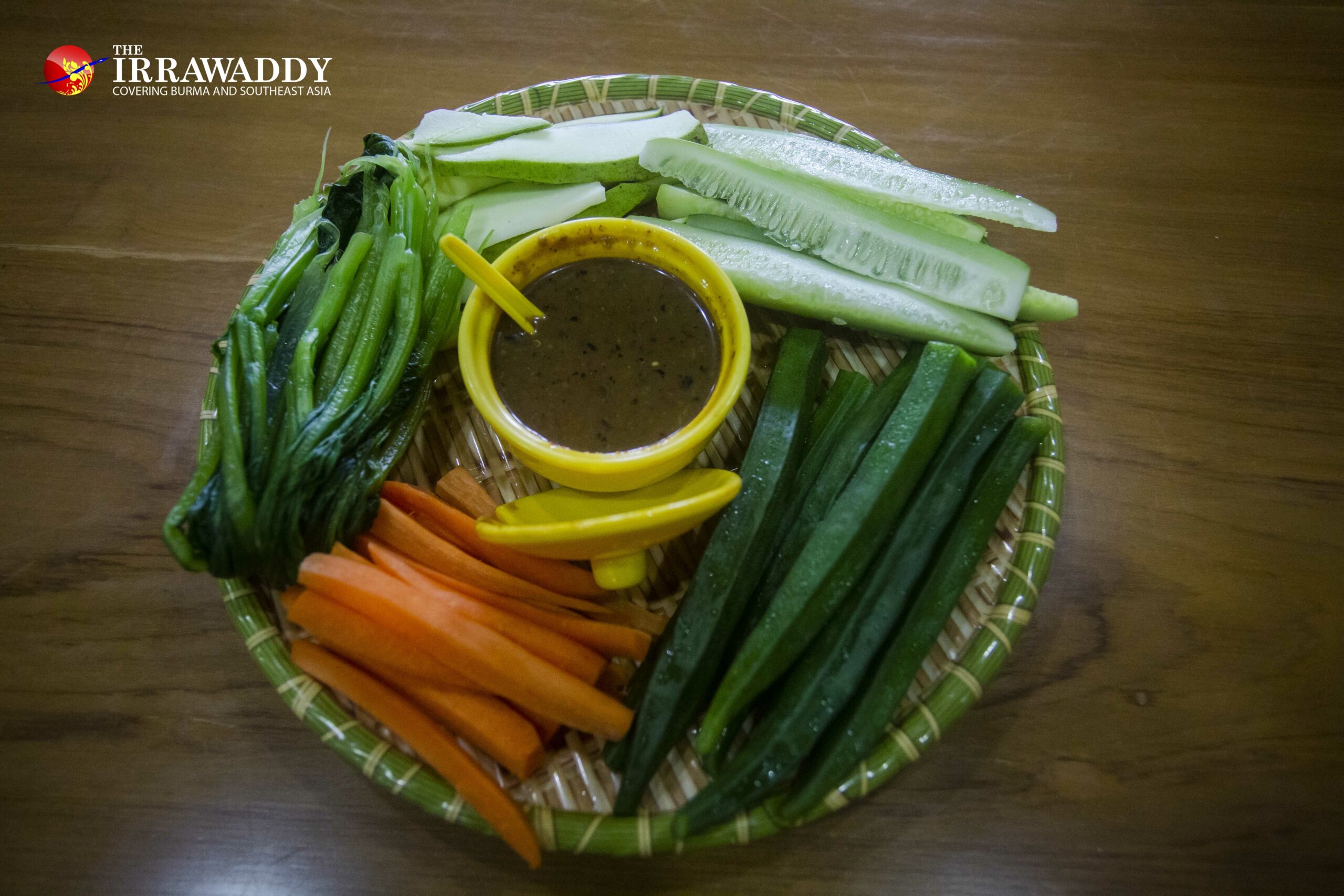
The prawn with chili, however, is cooked without ngapi, the chef finding the prawn flavor profile not a great fit for ngapi—surprisingly, since prawn is a common ingredient in ngapi. It came cooked in a curry gravy and it was, alas, a bit of a letdown, leaving us much preferring the beef ngapi chat.
But, while not normally a fan of ngapi yay with vegetables, their fishy, spicy ngapi yay was a surprising and welcome redemption from the prawns, distinct from versions offered by other local shops.
They do ngapi very well, and it shows in their deliciously fishy dipping sauce.
Ngapichat’s fish ball with ngapi chat mont di (3,000 kyats) differs from the popular Rakhine mont di. They pair rice noodles with a generous amount of spicy fish balls in a ngapi chat soup with an equally generous apportionment of green chili sauce.
The result is perfection. I fully recommended trying this dish. (The accompanying side dishes were good too.)
Meals come with a complimentary dessert from a rotating menu of mostly traditional Myanmar snacks.
“Some people come according to the days we serve their favorite desserts. We’re so happy to have gotten so much positive feedback already,” Ma Thiri Su said. “We always try to listen and adjust our food’s taste, quality and service.”
All of the recipes come from Ma Thiri Su’s aunty, who runs the kitchen herself.
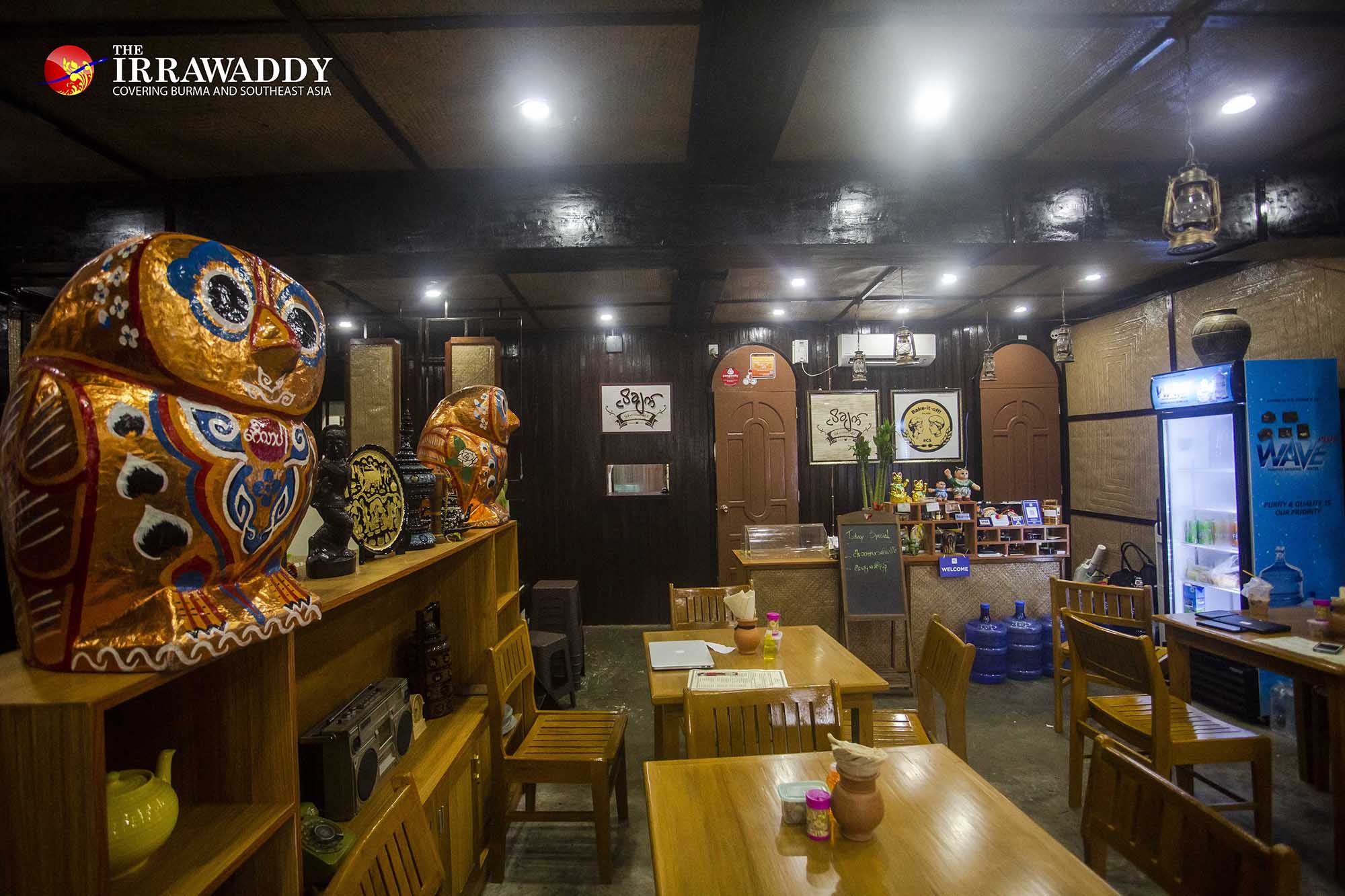
“That’s why we can serve homecooked curry. My aunty is really good at cooking,” Ma Thiri Su said.
Ngapichat has been attracting both locals and foreigners, and the owners say they’re particularly happy to see foreigners enjoying dishes predominantly featuring ngapi as a main ingredient.
“We didn’t expect them to like this cuisine so much, but some foreigners have eaten entire trays of ngapi yay and vegetables. It makes us happy to see,” Ma Thiri Su said.
“We plan to open another branch in the future, but it will take at least six more months,” Ko Kyaw Chan Nyein said. “We have to build our brand first.”
You may also like these stories:
Time to Treat Yourself: Yangon’s Top Fine-Dining Restaurants
Sedona Hotel Brings Taste of China to Myanmar


